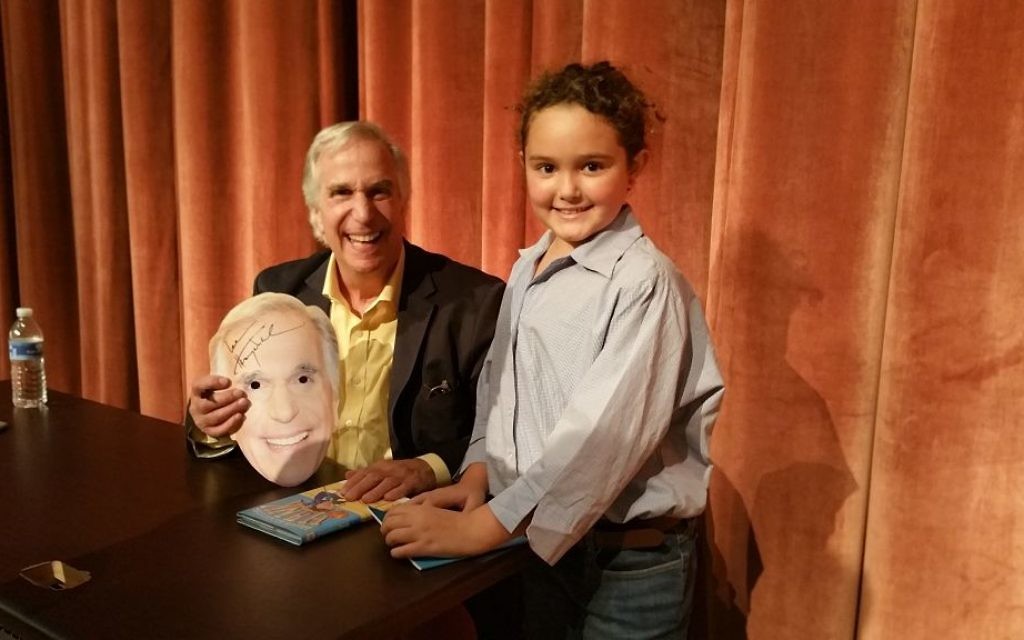The first day of first grade is terrifying for Ava, but not because she doesn’t like her teachers or her school or because she lacks friends.
It’s because she’s afraid that the struggles she had with reading in kindergarten won’t end just because she’s a year older.
When Ava writes “b” instead of “d” and “tap” instead of “cat,” she realizes it’s going to be a long year. And when the first report cards of the year are coming out, she suffers a tummy ache, then breaks down in tears.
Get The AJT Newsletter by email and never miss our top stories
Free Sign Up
“Why Can’t I Read?” is the story of one bright little girl and her baffling struggles with the printed word until she gets the diagnosis of dyslexia and learns that, though it will be tough, she will be able to read.
But this isn’t an adult’s perspective or an adult’s effort to present a child’s view. It’s the work of Dylan Dickson, who was 8 years old in the summer of 2016 when she worked with grandmother Phyllis Klein to share the experience of living with dyslexia.
“This was her project. I would just ask her the questions and read it back to her,” Klein said. “She knew what she wanted to say.”
Now 9 and in her second year at the Schenck School, which works exclusively with children with dyslexia, Dylan is ready to talk about her book and her life in a public forum for the first time at the Book Festival of Marcus Jewish Community Center on Sunday, Nov. 5, when she’ll be a special guest at “The Power of Different” author Gail Saltz’s session.

Dylan Dickson
In an interview, Dylan said she chose to make her author-talk debut at the JCC because she knows it so well. She went to preschool and swam there before taking her backstroke and breaststroke to the Dynamo swim club, and her mother, Jessica, teaches at the JCC.
“I wanted to tell more people about dyslexia,” Dylan said. “They can do anything they want.”
Dylan, a member of Congregation B’nai Torah, was attending the Epstein School (where her 13-year-old brother, Spencer, is now in eighth grade) when she went through six months of testing, guessing, wondering and worrying to try to answer the question in her book title.
Like her main character, Ava, she first went to the eye doctor, then had other tests. One problem, Dylan said, is that even though both her mom and her dad, Matt, remembered having reading difficulties as children, it remains a mystery whether either had dyslexia.
“I figured out after I had dyslexia that a whole bunch of my friends had dyslexia, and they weren’t telling people because they thought it was bad,” Dylan said. “So I wrote the book to show them it wasn’t bad.”
All the characters’ names and a few other words (racecar, for example) are palindromes because many people with dyslexia read backward. Words that are the same forward and backward avoid the problem.

Why Can’t I Read?
By Dylan Dickson
CreateSpace Independent Publishing, 34 pages, $11
When the book was just a home project, it featured a special font with weighting on letters to be easier for people with dyslexia, but that commercial typeface — used in Henry Winkler’s “Hank” series, which inspired Dylan — had to be replaced once other people wanted to buy “Why Can’t I Read?”
Dylan said she not only has inspired some friends to acknowledge their reading problems, but also has made others at Epstein want to write books. She’s planning to write a sequel, “Now I Can Read,” next summer.
She’s even ready for fans who want signed copies of her books. She has developed a special signature — two D’s in a circle — to save her the trouble of writing out her full name every time.
Still, she doesn’t aim to be an author when she grows up. Instead, she wants to be an inventor. She has in mind a device to check whether you have strep without jamming a stick down your throat.
That creative problem-solving reflects the main message she wants to spread: “If you have it (dyslexia), it’s sort of like a gift, but you’ll learn differently. And if you have it, you’re better at different things. You just might struggle at some things.”







comments